Clyde Hart is a renowned track and field coach specializing in the 400m event, with over five decades of experience. His training philosophy emphasizes a balanced approach, combining speed, endurance, and strength to optimize performance. Hart’s methods have produced legendary athletes like Michael Johnson and Jeremy Wariner, highlighting his ability to adapt training to individual needs. His program focuses on periodization, ensuring athletes peak during key competitions, making his approach highly effective in the demanding 400m race.
1.1 Overview of Clyde Hart’s Coaching Career
Clyde Hart is one of the most distinguished track and field coaches, with a career spanning over 56 years. He has specialized in the 400m event, earning a reputation as one of the sport’s premier coaches. Hart has coached at Baylor University, where he has mentored numerous elite athletes, including Olympic and World Championship medalists. His athletes have won 15 Olympic medals, with 11 being gold, showcasing his exceptional ability to prepare athletes for the highest level of competition. Hart’s career highlights include coaching Michael Johnson and Jeremy Wariner, both legends of the 400m race. His coaching philosophy, which emphasizes periodization and individualized training, has set a benchmark in the sport.
1.2 Key Principles of Hart’s 400m Training Methodology
Clyde Hart’s 400m training methodology revolves around a holistic approach that balances speed, endurance, and strength. His program emphasizes periodization, dividing the training year into distinct phases to ensure athletes peak at major competitions. Tempo endurance workouts are central, focusing on aerobic development to enhance recovery and sustained performance. Hart also prioritizes speed development through sprint drills and technique refinement. Strength training is integrated to build power and durability, while mental toughness is cultivated to prepare athletes for the demands of the 400m race. Hart’s approach is adaptable, tailored to individual needs, and supported by a strong emphasis on recovery and nutrition. This methodology has consistently produced world-class athletes capable of achieving podium success.
1.3 Importance of the 400m Event in Track and Field
The 400m event holds a prestigious place in track and field, demanding a unique blend of speed, endurance, and mental resilience. It is often regarded as one of the most challenging sprint races due to its requirement for sustained effort over a longer distance. The 400m has produced some of the sport’s most iconic athletes, including Michael Johnson and Jeremy Wariner, who have set world records and inspired generations. As a cornerstone of both individual and relay competitions, the 400m plays a critical role in shaping the sport’s history and attracting global attention. Its complexity and demanding nature make it a focal point for coaches like Clyde Hart, who specialize in unlocking athletes’ potential for this event.
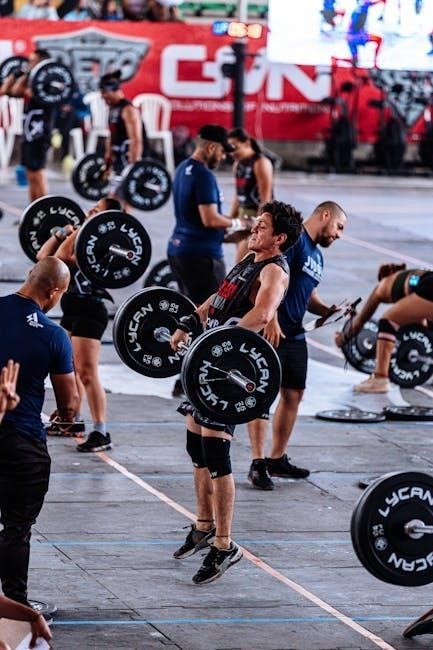
Clyde Hart’s Training Program Structure
Clyde Hart’s training program is annually structured from October to August, focusing on periodization. It integrates speed, endurance, and strength training to optimize performance effectively.
2.1 Annual Training Plan: From October to August
Clyde Hart’s annual training plan for 400m athletes spans from October to August, carefully structured to ensure progressive development. The early period focuses on building aerobic endurance and strength through tempo runs and resistance exercises. By the middle period, the emphasis shifts to enhancing speed and power, incorporating sprint drills and plyometrics. The racing period fine-tunes technique and race strategy, with reduced volume to peak performance. This phased approach ensures athletes are prepared for key competitions, balancing physical and technical demands. The plan integrates periodization, allowing for recovery and adaptation, making it a cornerstone of Hart’s successful methodology.
2.2 Periodization of Training: Early, Middle, and Racing Periods
Clyde Hart’s training program is divided into three distinct periods: early, middle, and racing. The early period (October to December) focuses on building aerobic endurance and strength through tempo runs and resistance exercises. The middle period (January to April) shifts to developing speed and power, with sprint drills and plyometrics. The racing period (May to August) emphasizes race-specific strategies, technique refinement, and tapering to ensure peak performance. This structured approach allows athletes to gradually adapt, avoiding overtraining and ensuring they are optimally prepared for competitions. Hart’s periodization strategy is tailored to maximize performance while minimizing the risk of injury or burnout.
2.3 Integration of Speed, Endurance, and Strength Training
Clyde Hart’s training methodology seamlessly integrates speed, endurance, and strength to create a well-rounded athlete. Speed development is achieved through sprint drills and technique-focused workouts, enhancing raw power and acceleration. Endurance is built with tempo runs and continuous aerobic exercises, improving lactate threshold and stamina. Strength training, including resistance exercises and plyometrics, adds muscular power and durability. Hart’s approach ensures these components are trained simultaneously, with each phase of the season emphasizing different aspects. This holistic integration allows athletes to maintain speed while enduring the demands of the 400m race, ultimately leading to peak performance. The balance between these elements is crucial for success in the 400m event.
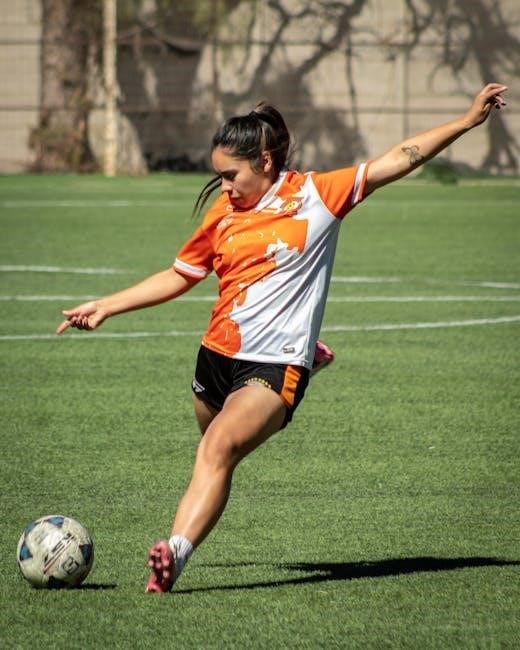
Key Components of Clyde Hart’s 400m Training
Clyde Hart’s training emphasizes tempo endurance, speed development, strength, and flexibility. These components create a balanced athlete, blending aerobic capacity, explosive power, and technical precision for optimal 400m performance.
3.1 Tempo Endurance: Aerobic Workouts for Enhanced Performance
Clyde Hart’s tempo endurance workouts focus on building aerobic capacity, crucial for sustained performance in the 400m. These workouts involve continuous runs or repeats at a steady, controlled pace, slower than race speed, to enhance oxygen uptake and delay fatigue. By improving aerobic efficiency, athletes recover faster and maintain race pace more effectively. Tempo endurance is foundational, particularly in the early training phases, as it establishes the base fitness needed for more intense work. Hart’s approach ensures athletes can handle the demands of high-intensity racing while maintaining proper form and composure, making it a cornerstone of his successful 400m training methodology.
3.2 Speed Development: Sprint Drills and Techniques
Clyde Hart’s speed development program integrates specific sprint drills to enhance raw speed and technique for 400m athletes. These drills focus on proper running mechanics, including high knees, quick turnover, and powerful stride extension. Techniques like resisted sprints and downhill runs are employed to improve acceleration and speed endurance. Hart emphasizes the importance of maintaining form under fatigue, ensuring athletes can sustain their top speed longer. Additionally, explosive power exercises, such as short sprints and plyometrics, are incorporated to maximize speed output. These drills are progression-based, starting with shorter distances and gradually increasing intensity, ensuring athletes build both speed and endurance simultaneously, critical for the 400m event.
3.3 Strength Training: Building Power and Durability
Clyde Hart’s strength training program is designed to build the power and durability essential for 400m athletes. The program integrates weightlifting, plyometrics, and resistance exercises to enhance muscular strength and explosive force. Hart emphasizes periodization, with early-season focus on building a foundation of strength and mid-season shifts to power development. Exercises like squats, deadlifts, and lunges target key muscle groups for sprinting. Plyometric drills, such as box jumps, improve explosiveness. This structured approach ensures athletes develop the muscular endurance and resilience needed to maintain top speed through the 400m race. Strength training is a cornerstone of Hart’s methodology, directly contributing to improved performance and injury prevention.
3.4 Flexibility and Mobility: Essential for Optimal Performance
Clyde Hart places a strong emphasis on flexibility and mobility as foundational components of his 400m training program. He believes that maintaining a full range of motion is critical for maximizing sprint mechanics and preventing injuries. Hart incorporates dynamic stretching, static stretching, and mobility drills to improve joint flexibility and muscle elasticity. These exercises are often performed during warm-ups and cool-downs to ensure optimal muscle function. By enhancing mobility, athletes can maintain proper posture and technique during the race, reducing energy waste and improving efficiency. Hart’s approach to flexibility also supports recovery, allowing athletes to tolerate the high demands of intense training. This focus ensures athletes remain injury-free and perform at their best.
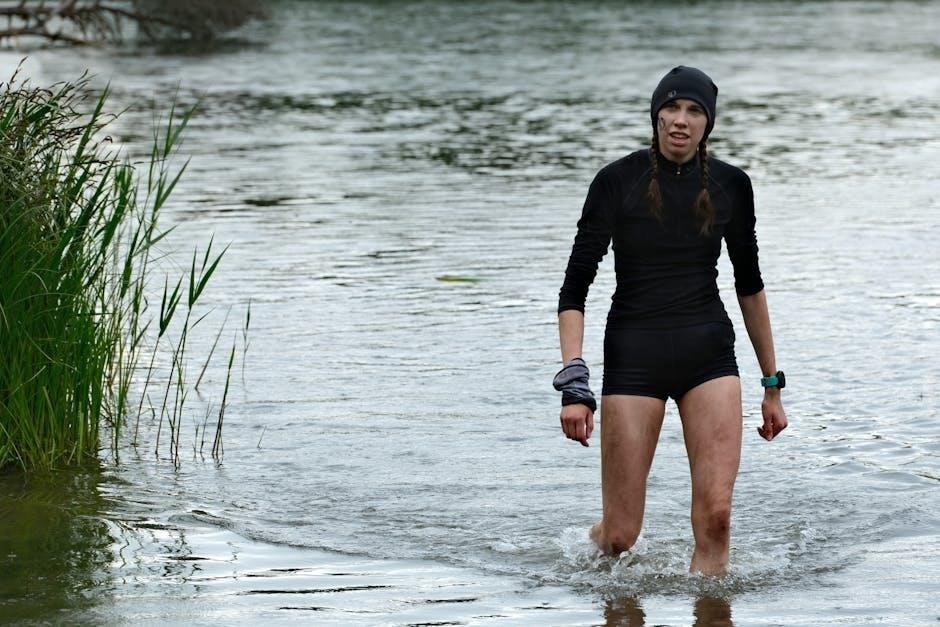
Specific Workouts and Drills
Clyde Hart’s training includes specialized drills like 200m/400m transition runs, continuous aerobic exercises, and the Pro Agility Shuttle to enhance speed, agility, and race-specific endurance, preparing athletes for competition dynamics.
4.1 200m/400m Transition Drills
Clyde Hart’s 200m/400m transition drills are designed to enhance an athlete’s ability to maintain speed over the longer distance while building race-specific endurance. These workouts often involve running at a controlled tempo to simulate race conditions, helping athletes adapt to the physical and mental demands of transitioning from the 200m to the 400m. The drills focus on improving lactate threshold, speed endurance, and the ability to sustain form under fatigue. By bridging the gap between sprinting and distance running, these exercises play a critical role in preparing athletes for the 400m event, ensuring they can execute race strategy effectively and maintain composure during the final stages of the race.
4.2 Continuous Runs for Aerobic Development
Clyde Hart’s training includes continuous runs as a cornerstone of aerobic development, essential for building the endurance needed in the 400m event. These workouts involve sustained runs of 15 to 45 minutes at a steady, controlled pace, designed to enhance cardiovascular fitness and increase lactate threshold. By maintaining a consistent effort, athletes improve their body’s ability to utilize oxygen efficiently, delaying fatigue and enhancing recovery. Hart incorporates these runs throughout the training cycle, adjusting intensity and duration based on the periodization phase. This approach ensures athletes develop the aerobic capacity to support their speed and power, making continuous runs a vital component of Hart’s comprehensive 400m training program.
4.3 Pro Agility Shuttle and Its Benefits
The Pro Agility Shuttle is a key drill in Clyde Hart’s 400m training, designed to enhance agility, quickness, and reaction time. Athletes perform rapid changes of direction over a short distance, mimicking the explosive movements required in the 400m race. This drill improves acceleration, deceleration, and the ability to maintain balance while transitioning between sprints. Hart incorporates the shuttle during the speed development phase to build neuromuscular coordination and explosive power. Its benefits include enhanced muscle activation, improved footwork, and better overall athleticism, making it an essential component for preparing athletes for the demands of the 400m event.
4.4 Resistance Band Drills for Explosive Power
Resistance band drills are integral to Clyde Hart’s 400m training, focusing on building explosive power and strength. These drills involve using elastic bands to create resistance during movements like sprints, lunges, and lateral walks. Athletes perform these exercises to enhance their power output, which is critical for accelerating out of the blocks and maintaining speed through the race. Hart often incorporates banded drills during the strength training phase to improve neuromuscular coordination and muscle fiber recruitment. The continuous tension from the bands helps athletes develop the ability to generate force quickly, translating to faster times on the track. This method also reduces the risk of overtraining while maximizing performance gains.
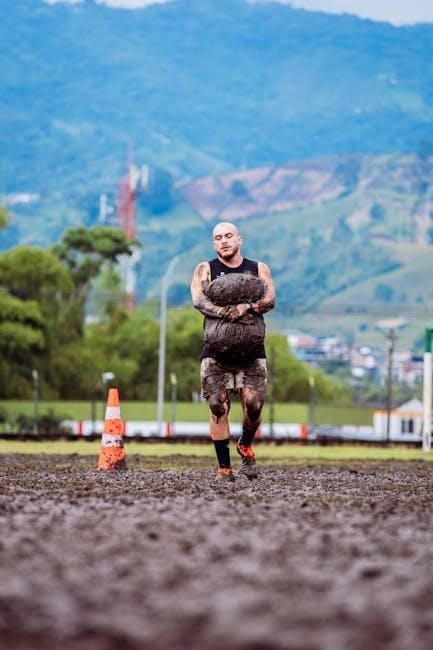
Mental and Physical Preparation
Mental toughness and physical resilience are crucial for 400m success. Hart emphasizes psychological strategies, such as visualization and positive affirmations, to build race confidence and endurance.
5.1 The Role of Mental Toughness in the 400m Race
Mental toughness is a cornerstone of Clyde Hart’s training philosophy, enabling athletes to push through physical and mental barriers during the demanding 400m race. Hart emphasizes the importance of psychological resilience, teaching athletes to maintain focus and composure under pressure. Visualization techniques, positive affirmations, and race-day simulations are integral to his approach, helping athletes build confidence and mental endurance. These strategies allow runners to stay disciplined, execute their race plan, and overcome fatigue during the final stretch. By fostering a strong mindset, Hart prepares his athletes to perform at their best, even in the most challenging moments of competition.
5.2 Strategies for Building Race Confidence
Clyde Hart emphasizes building race confidence through structured preparation and positive reinforcement. His training program includes setting achievable goals, allowing athletes to experience success and gradually build belief in their abilities. Hart encourages athletes to focus on process-oriented goals, such as executing proper technique or maintaining race pace, rather than solely on outcomes. He also incorporates race simulations in practice, enabling athletes to familiarize themselves with competition conditions. Additionally, Hart uses positive affirmations and visualization techniques to strengthen an athlete’s mindset. By fostering a sense of control and readiness, Hart helps his athletes approach races with unwavering confidence, knowing they are fully prepared to perform at their best.
5.3 Nutrition and Recovery: Fueling for Performance
Clyde Hart stresses the importance of proper nutrition and recovery to optimize athletic performance. A balanced diet rich in carbohydrates, proteins, and fats provides the necessary energy for intense training. Hydration is also critical, as it supports both performance and recovery. Hart recommends post-workout recovery meals to replenish energy stores and aid muscle repair. Additionally, he incorporates strategies like stretching, foam rolling, and sleep to enhance recovery. Adequate rest allows athletes to adapt to training, ensuring they perform at their best. By prioritizing nutrition and recovery, Hart’s athletes maintain peak physical condition, reducing the risk of injury and improving overall performance.
5.4 Sleep and Rest: Critical for Training Adaptation
Clyde Hart emphasizes the vital role of sleep and rest in his 400m training philosophy. He recommends 7-9 hours of quality sleep daily to aid physical recovery and mental rejuvenation. Consistency in sleep patterns is key, as it helps regulate the body’s internal clock, ensuring optimal performance. Additionally, Hart incorporates designated rest periods between intense training sessions to prevent overtraining and reduce injury risk. These practices allow athletes to adapt to the demands of training, enhancing their overall resilience and race readiness. By prioritizing sleep and rest, Hart’s athletes maintain peak physical and mental condition, essential for excelling in the 400m event.
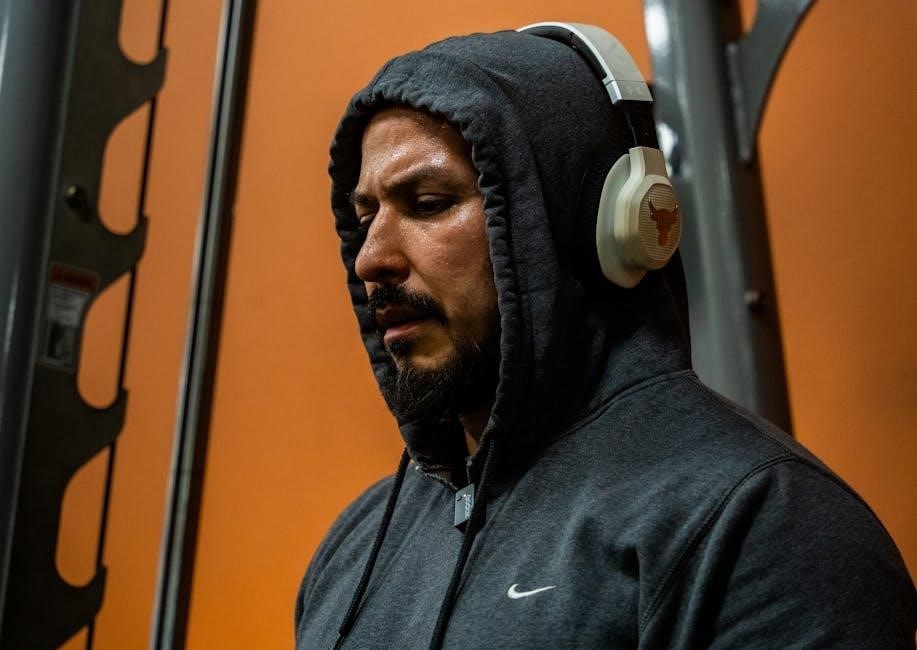
Clyde Hart’s Coaching Success Stories
Clyde Hart’s coaching has led numerous athletes to Olympic and World Championship medals, solidifying his legacy as a premier 400m coach with unparalleled success.
6.1 Jeremy Wariner: A Testimonial to Hart’s Coaching
Jeremy Wariner, a World and Olympic 400m champion, credits Clyde Hart’s coaching as pivotal to his success. Under Hart’s guidance, Wariner refined his technique and built the endurance needed to dominate the 400m event. Hart’s periodized training plan, emphasizing speed, strength, and aerobic development, helped Wariner peak during major competitions. Wariner’s ability to maintain a consistent pace and deliver strong finishes was a hallmark of Hart’s training philosophy. His success underscores Hart’s ability to adapt training to individual athlete needs, fostering both physical and mental excellence. Wariner’s achievements, including his quest to break Michael Johnson’s world record, highlight the effectiveness of Hart’s coaching methods and his lasting impact on the sport.
6.2 Michael Johnson: The Legacy of Hart’s Guidance
Michael Johnson, a legendary sprinter, owes much of his success to Clyde Hart’s expert guidance. Under Hart’s coaching, Johnson achieved historic feats, including winning both the 200m and 400m gold medals at the 1996 Atlanta Olympics. Hart’s training philosophy, which emphasized precise race strategy and technical mastery, was instrumental in Johnson’s dominance. Johnson’s ability to maintain an unparalleled level of consistency and speed over the 400m distance was a testament to Hart’s innovative methods. Their partnership not only redefined the 400m event but also set a new standard for track and field coaching. Johnson’s legacy continues to inspire athletes, showcasing the enduring impact of Hart’s coaching brilliance.
6.3 Olympic and World Championship Medalists Coached by Hart
Clyde Hart’s coaching prowess is exemplified by the numerous Olympic and World Championship medalists he has mentored. Over his illustrious career, Hart has guided athletes to 15 Olympic medals, including 11 gold medals. His success spans six consecutive Olympics from 1992 to 2012, a remarkable streak that underscores his consistent excellence. Beyond Michael Johnson and Jeremy Wariner, Hart has coached several other elite athletes who have clinched medals in both individual and relay events; His ability to adapt training methods to suit each athlete’s strengths has been key to their success. Hart’s legacy continues to shine through the achievements of his athletes on the world stage, solidifying his status as a coaching legend in track and field.
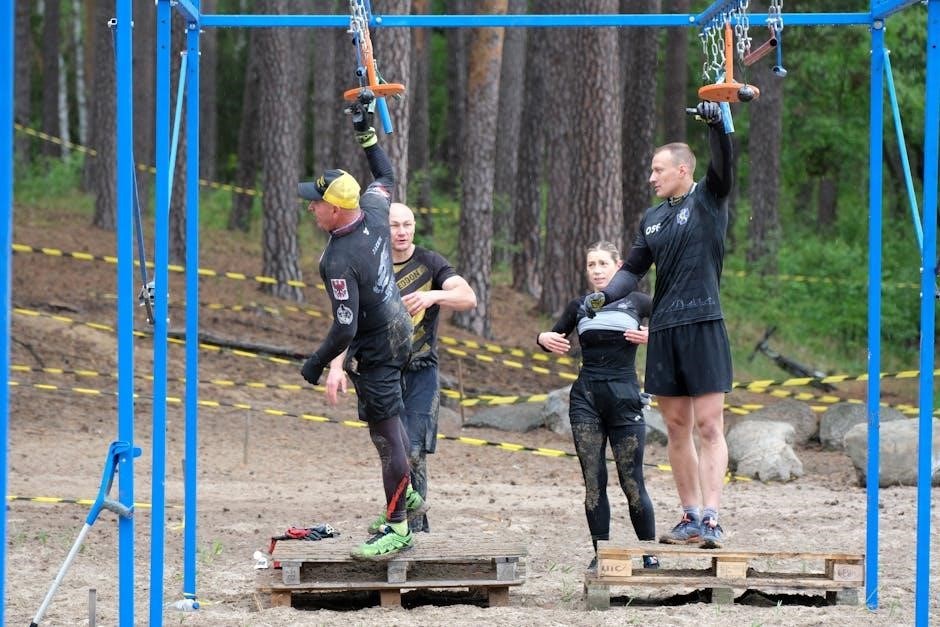
The Role of Technology and Data in Hart’s Training
Clyde Hart leverages GPS and heart rate monitors to track athlete performance, ensuring precise training. Video analysis fine-tunes techniques, while data-driven insights optimize workouts and recovery.
7.1 Use of GPS and Heart Rate Monitors
Clyde Hart incorporates GPS and heart rate monitors to meticulously track athletes’ performance. These tools provide insights into speed, distance, and exertion levels, enabling precise training adjustments. By monitoring heart rates, Hart ensures athletes recover adequately between sessions, preventing overtraining. GPS data helps analyze running dynamics, such as pacing and consistency, which are crucial for 400m races. This technology allows Hart to tailor workouts to individual needs, optimizing performance and reducing injury risks. The integration of these devices underscores Hart’s commitment to data-driven coaching, ensuring athletes achieve peak conditioning and race readiness. This approach aligns with his philosophy of balancing intensity with recovery for sustained success.
7.2 Video Analysis for Technique Improvement
Clyde Hart extensively uses video analysis to refine athletes’ techniques, ensuring optimal performance in the 400m race. By capturing and reviewing footage of training sessions and races, Hart identifies subtle flaws in posture, stride mechanics, and arm swing. This allows for immediate corrections, enhancing efficiency and consistency. Video analysis also enables comparisons between practice and competition, helping athletes adapt their techniques under race conditions. Hart believes proper form is crucial for maintaining speed and endurance, and this tool plays a vital role in injury prevention by addressing technical issues early. The use of video feedback complements his data-driven approach, providing a comprehensive understanding of an athlete’s performance and areas for improvement.
7.3 Data-Driven Decisions in Training
Clyde Hart’s training methodology relies heavily on data-driven decisions to optimize athlete performance. By leveraging tools like GPS trackers and heart rate monitors, Hart gains insights into an athlete’s workload, recovery, and progress. This data is used to tailor training programs, ensuring athletes are neither undertrained nor overtrained. Hart also employs performance metrics, such as split times and speed outputs, to refine race strategies and technique adjustments. The integration of real-time data allows for precise adjustments, ensuring athletes peak at critical moments. This approach minimizes injury risks and maximizes performance potential, showcasing Hart’s commitment to science-backed training methods in the pursuit of excellence in the 400m event.

The ‘Clyde Hart 400m Training PDF’ Resource
The Clyde Hart 400m Training PDF is a comprehensive guide detailing Hart’s proven methodologies. It includes annual training plans, specific workouts, and insights into his coaching philosophy. Widely sought after by coaches and athletes, the document outlines key principles like periodization, speed development, and endurance training. It serves as an invaluable resource for anyone aiming to master the 400m event, offering practical strategies and expert advice from one of track and field’s most respected coaches.
8.1 Overview of the PDF Document
The Clyde Hart 400m Training PDF is a detailed guide outlining Hart’s proven training methodologies for the 400m event. It covers the entire annual training cycle, from October to August, and includes periodized plans divided into early, middle, and racing periods. The document emphasizes the integration of speed, endurance, and strength training, providing specific workouts and drills. It also addresses mental preparation, nutrition, and recovery, offering a holistic approach to athlete development. The PDF includes sample training schedules, technique tips, and insights into Hart’s coaching philosophy, making it an invaluable resource for both athletes and coaches. Its practical, data-driven approach ensures athletes can peak for major competitions.
8.2 Key Insights and Takeaways
The Clyde Hart 400m Training PDF offers actionable insights into Hart’s coaching methods, emphasizing periodization and balanced training. It highlights the importance of tempo endurance, speed development, and strength training, providing drills like 200m/400m transition runs and resistance band exercises. The document underscores the need for mental toughness and race-specific strategies, drawing from Hart’s success with athletes like Michael Johnson and Jeremy Wariner. Coaches and athletes gain practical advice on structuring workouts, managing recovery, and optimizing performance. The PDF’s detailed yet flexible approach makes it a valuable tool for achieving success in the 400m event, offering both theoretical knowledge and real-world application.
8.3 How to Implement the Training Plan
Implementing Clyde Hart’s 400m training plan requires a structured approach, starting with understanding the annual cycle from October to August. Athletes should begin with foundational work in the early period, focusing on tempo endurance and strength. As the season progresses, introduce speed development drills and race-specific strategies. Incorporate continuous runs for aerobic development and resistance band exercises for explosive power. Prioritize mental preparation through goal setting and visualization. Ensure proper nutrition, recovery, and sleep to support training adaptation. Coaches should monitor progress, adjusting workouts based on athlete feedback and performance metrics. Consistent execution and attention to detail are key to maximizing results and peaking for major competitions.
Clyde Hart’s 400m training philosophy has left an indelible mark on track and field, proving his methods are timeless. His balanced approach to speed, endurance, and strength continues to inspire athletes worldwide. Hart’s success with legends like Michael Johnson and Jeremy Wariner underscores his ability to adapt training to individual needs. Aspiring athletes and coaches can learn from his structured plans, emphasizing periodization and mental toughness. Hart’s legacy is a testament to dedication and innovation, encouraging future generations to embrace his principles for achieving excellence in the 400m race.

9.1 The Impact of Clyde Hart’s Training Methods
Clyde Hart’s training methods have revolutionized the 400m event, producing legendary athletes like Michael Johnson and Jeremy Wariner. His structured, periodized approach ensures athletes peak at critical competitions, maximizing performance. Hart’s emphasis on balancing speed, endurance, and strength has set a benchmark for coaches worldwide. His ability to adapt training to individual needs has yielded unparalleled success, including multiple Olympic and World Championship medals. Hart’s legacy extends beyond his athletes, influencing modern coaching practices and inspiring future generations to embrace his holistic training philosophy. His impact on track and field remains profound, solidifying his reputation as one of the sport’s most influential figures.
9.2 The Future of 400m Training Inspired by Hart
Clyde Hart’s innovative training methods have set a foundation for the future of 400m training. His emphasis on periodization and blending speed, endurance, and strength continues to inspire coaches to adopt holistic approaches. The integration of technology, such as GPS and heart rate monitors, as seen in his practices, will likely become more prevalent in optimizing athlete performance. Hart’s legacy encourages the development of personalized training plans that cater to individual athlete needs, ensuring continued success in the sport. As his methodologies evolve, they will undoubtedly shape the next generation of 400m athletes and coaches, maintaining the high standards he has established.
9.3 Encouragement for Aspiring Athletes and Coaches
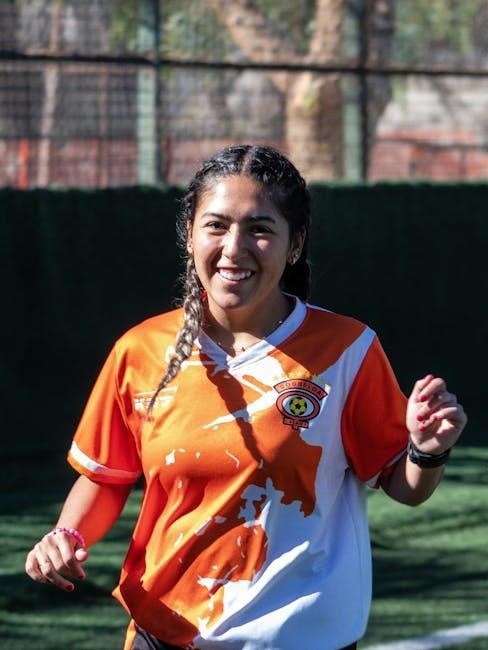
Clyde Hart’s success with athletes like Michael Johnson and Jeremy Wariner serves as inspiration for aspiring sprinters and coaches. His training philosophy, detailed in the ‘Clyde Hart 400m Training PDF,’ offers a roadmap for achieving excellence. Athletes are encouraged to embrace the balance of speed, endurance, and strength, while coaches can learn from Hart’s adaptive and periodized approach. The PDF’s insights provide a foundation for understanding how to optimize performance and build resilience. For those aiming to excel in the 400m event, Hart’s legacy offers a blueprint for success, emphasizing dedication, resilience, and a commitment to continuous improvement.

